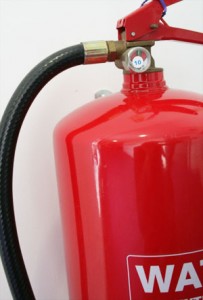 Carrying out a Fire Risk Assessment is an essential safety responsibility for your workplace. A Fire Risk Assessment will confirm that the systems and precautions you have in place are effective and ensure the safety of your staff and premises.
Carrying out a Fire Risk Assessment is an essential safety responsibility for your workplace. A Fire Risk Assessment will confirm that the systems and precautions you have in place are effective and ensure the safety of your staff and premises.
All your Fire Safety Measures will be founded on your Fire Risk Assessment. It is not the be all and end all, but it is useful tool which identifies any issues that may need attention. It will help you future the protection your staff and your business in case of a fire.
The Fire Risk Assessment will help you to:
- identify possible fire hazards
- reduce to an acceptable level any risk from those hazards
- decide necessary actions to ensure the safety of people on your premises in the event of fire.
Carrying Out Your Fire Risk Assessment
A Fire Risk Assessment is a logical and systematic process, it should not be rushed. Each step must be completed properly before the next one can make sense.
Look at all areas of your workplace, including any outside premises or rarely used storage areas, cellars, roof spaces, etc. For very large or multiple premises, split the assessment into separate zones.
There are four steps involved in producing your Fire Risk Assessment, and an important fifth step in terms of Reviewing and Revising the assessment regularly. These steps are as follows:
- Identify Hazards
- Identify People At Risk
- Evaluate Risks – are adequate precautions in place or is further action necessary?
- Record Your Findings – write an emergency plan, provide information and training, etc
- Review (see below)
Fire Risk Assessment Form
Government Guidance advises the five step process, so follow that format. There is little clear guidance on a system of recording the findings of the Fire Risk Assessment. If you want to create a Fire Risk Assessment Form that it is more relevant to your particular workplace and practices, ensure you always include the following key elements:
- name of your organisation/premises
- name of exact location being assessed, if necessary
- name of the Assessor
- date of the assessment, and the date that it should be reviewed
- space for any additional comments.
When carrying out your assessment use pages that feature at least six columns to record the following:
- details of the fire hazard identified
- the people affected by it
- existing controls you use to minimise the risk
- what further action is required to reduce or remove the hazard
- an indication of the urgency of this action (some sort of simple key)
- a space for signing when the action is complete
- space at the bottom of the form for the Assessor to sign and date.
Remember a Fire Risk Assessment is not just a box ticking exercise. When you carry out the above stages you are likely to identify things that need to be done like changes to your fire extinguishers, staff training, create an emergency plan, etc. The Act says that you need to appoint one or more ‘competent persons’ to implement any necessary action brought to light by the assessment. This Competent Person may be yourself, but must have “Sufficient training, experience and knowledge” to carry out what is required of them. You may need to consider using Fire Consultants.
Remember Fifth Step: REVIEW
You should review your Fire Risk Assessment regularly usually on an annual basis. You will also need to monitor it to see if the risk management measures you have put in place are working properly.
You may need to amend your Fire Risk Assessment if there are changes to your workplace or work practices. If there are physical changes to the buildings, changes to furniture or storage areas, new materials of chemicals being used, etc. So if anything changes in regards to your working environment or practices, consider whether this effects the potential fire hazard or risk to your people and amend your Fire Risk Assessment accordingly.
If you are not confident, BPT Electrical are now carrying out Fire Risk Assessments. Please contact us for further information.



